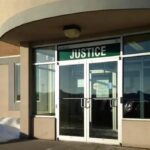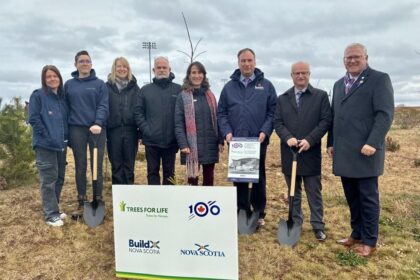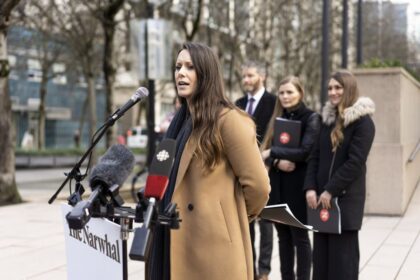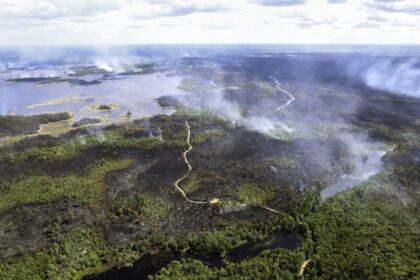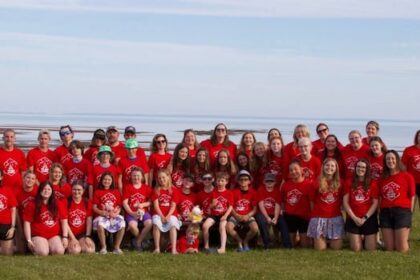A panel of experts told the Assembly of First Nations gathering in Winnipeg that, despite expanding services and celebrating recovery stories, they are losing the battle against the opioid crisis. The tools they have—treatment programs, cultural healing, and community support—are working, but not nearly enough. And without adequate on-reserve policing, leaders say their communities remain vulnerable. “I think we could all raise our hands and say that we know of someone that has been impacted by the drug crisis,” said Chief Andrea Paul, regional chief for Nova Scotia and former chief of Pictou Landing, as she introduced a panel of speakers at the gathering. The speakers each address the opioid crisis spreading through First Nations communities. It didn’t take long for speakers to prove that point. Saskatoon Tribal Council Chief Mark Arcand, one of the speakers, shared the emotional journey of his 35-year-old son, a former crystal meth addict who spent six years in and out of jail. “He’d say, ‘Tribal Chief Dad, can I have some money?’ For what? ‘To eat.’ But instead of food, he’d go buy drugs,” Arcand told those gathered. Councillor Allan Louie of the Okanagan Indian Band called the statistics “tragic” According to ??, in the past year, there have been 3,400 accidental opioid toxicities and 427 deaths (across the country?). Of those who died, 40 percent were female, and almost half were over the age of 40, he said. Statistics from Alberta and Ontario show similar trends. According to provincial data, First Nations people are seven times more likely to die from an opioid overdose than other Canadians. In Arcand’s case, his son finally made it to recovery, but only after he made the difficult decision to cut his son off. Left with few options, his son turned to theft to support his addiction and ended up incarcerated. Through a community-based program, he turned his life around. “He said, ‘Dad, I want to do what you do. I want to help people. I’m tired of hurting people through addictions,’” Arcand said. While still serving a criminal sentence, Arcand said his son graduated from the Saskatchewan Indian Institute of Technologies and this fall began studying social work at the First Nations University of Canada. Despite his success, his criminal record made finding work difficult. “A lot of non-Indigenous organizations wouldn’t hire him because of his criminal record,” said Arcand. The Saskatoon Tribal Council gave him a job. He worked in the community’s homeless shelter as a peacekeeper. “Nobody else is giving our people a chance to succeed in life, except for our own organizations, our own communities,” Arcand said. The panel discussed their success stories, programs that are working, but also the lack of funding and community police services that mean they cannot seem to get the opioid crisis under control. How First Nations are coping ‘Our people heal off the land,” Chief Shelley Bear tells the AFN, ‘going back to Mother Earth and learning those ways of life.’ Photo: Mark Blackburn/APTN. Arcand said things have worsened since the pandemic. He said the STC didn’t extend services into Saskatoon until after the pandemic. “We’ve seen the increase of drug use, homelessness, abuse, all of the negativities that we can imagine from the areas of residential schools,” he said. The Saskatoon shelter, led by a First Nations organization, is the largest in Saskatchewan. It serves 160 people, and about 85 per cent of them are First Nations. “We call them relatives because we’re all related, doesn’t matter where you’re from.” He highlighted the council’s wraparound approach, including a 55-unit facility where families must complete a support program before moving in. “People need hope. They need opportunities. We can help people that want to change their lives.” Chief Shelley Bear of the Ochapowace Nation in southeast Saskatchewan spoke about her community being under a state of emergency. Bear said she arrived late to the AFN assembly after attending the funeral of a young man who died from an opioid overdose. “It’s not just about addiction, it’s about pain, it’s about loss, and it’s about systems that disconnected us from who we really are,” she said, “And I think going back to our ceremonies, going back to our way of life, we are as First Nations people, is one of the first steps that we need to take.” Bear said she met with Saskatchewan Premier Scott Moe to explain the scale of the crisis. “It’s not only challenges in First Nations communities anymore, it’s challenges in town, and the cities,” she said. “He finally understood those words.” A new treatment center was built after years of advocacy. But when the premier proposed locating it in urban Regina, Bear pushed back. “I was like, that’s not where our people heal. Our people heal off the land,” she said. “Going back to Mother Earth and learning those ways of life. Learning the lives, learning how Mother Earth lives is how we should live, and that’s where our people are going to heal, is back home, off the lands.” Councillor Allan Louie from the Okanagan Indian Band in British Columbia said he agrees that land-based healing programs work, but emphasized the need for long-term support. “One of the things that I think every community and treatment center that I’ve talked to says—the biggest problem isn’t the people in treatment,” he said, “it’s actually the people when they leave treatment.” ‘In British Columbia, when we talk about social determinants of health, there’s a whole gamut of things that make a healthy person,’ says Allan Louie from the Okanagan Indian Band. Photo: Mark Blackburn/APTN. He said B.C. has responded with a broad range of investments. There have been 105 harm reduction grants to communities, 54,126 nasal naloxone kits distributed to 112 First Nations and 1,742 virtual psychiatric and addictions sessions. As of this year, 4,041 First Nations people are using opioid agonist therapy (therapy that uses medication to reduce cravings and withdrawal symptoms). Nurse practitioners now prescribe treatment and harm reduction vending machines are in development. The province is also expanding cultural and land-based healing, grief support, peer networks, drug alerts, emergency bed pathways, and anti-stigma campaigns. “Stigma is being addressed by reframing substance use as sickness, not evil,” said Louie. Still, housing is a major concern. “In British Columbia, when we talk about social determinants of health, there’s a whole gamut of things that make a healthy person,” Louie said. “You have your unemployment, your education, your access to safe health, and at the middle of it all every health worker will tell you, you’ve gotta have a safe home.” Louie praised the community of Penticton, B.C., for buying houses so people returning from treatment have a place to heal. Similar housing and support efforts are being rolled out in the Okanagan, Victoria, and other cities through partnerships with BC Housing and Interior Health. Arcand also shared a story of one of the Saskatoon Tribal Council’s success cases. Three years ago, a young woman was homeless and had lost custody of her children. Through council programming, she graduated, regained custody, earned her learner’s permit, and now works in the outreach program. “She wants to give back,” Arcand said. “She said, ‘I can help people.’” “She knows everyone on the street,” Arcand said. “And that’s what makes her so effective.” But not everyone is being reached. Bear said the province of Saskatchewan isn’t listening. “The response that we’re getting back in Saskatchewan is we’re not building any more treatment centers, even though we’re in a crisis, even though we’re suffering significant losses. We only have funding to fund the ones that are in operations right now.” Inadequate policing to deal with on-reserve drug issues First Nations, often small communities where families are closely related, struggle over what to do when it is their own relatives selling drugs. “It used to be at one time, if you wanted to get access to hard drugs, you left our communities and you went into the local city and got what you needed to get to help you deal with the trauma that you’re going through. Now we have these homes, right, in our communities,” said Louie. Louis said family ties make enforcement difficult. “It’s not easy because you’re asking families to remove, you know, your brothers, your fathers, your sons, uncles, daughters, aunts,” Louie said. “It is a hard thing to do, but you know what? At some point, we’ve gotta actually realize the safety of the community is more important than the individual.” That reality is compounded by the lack of adequate community policing. According to the First Nations Chiefs of Police Association, there are only 150 First Nations police officers across Canada. Not every First Nation has its own force—some are policed by provincial services or the RCMP, which may not keep a consistent presence in the community. AFN Regional Chief of Quebec and Labrador Francis Verreault-Paul said the problem is two-fold; racism within provincial and federal forces, and the chronic underfunding of Indigenous police. “While Canada Police reform must address the racism in their own house, we also need to support our own First Nation police forces and ensure they have the resources and tools to ensure our community are safe,” he said. AFN Regional Chief of Quebec and Labrador Francis Verreault-Paul tells the gathering that First Nations need legislation that recognizes policing as an essential service. Photo: Mark Blackburn/APTN. He added that where First Nations Police services exist, they are consistently and systematically underfunded. The Indigenous Police Chiefs of Ontario (IPCO) launched such a case in March 2023 on behalf of Treaty 3 Police, the United Chiefs & Councils of Manitoulin Anishnaabe Police and the Anishinabek Police Service. The Canadian Human Rights Tribunal was scheduled to begin hearings in January 2025 on arguments that Public Safety Canada chronically underfunds and unfairly restricts Indigenous police services. The hearings have been delayed. Many leaders said the solution is clear. First Nations policing must be recognized and funded as an essential service. “We need legislation that recognizes First Nation policing as an essential service, providing those basic legal protection enjoyed by non First Nation police services,” Verreault-Paul said. “I think this is the time when governments need to really implement legislative reconciliation back home instead of pretty much systematically going to courts.” Chief Patsy Corbiere, Aundeck Omni Kaning First Nation, which sits on the on the north Channel of Manitoulin Island in Ontario, said she has watched these problems go unresolved for decades. “The First Nation perspective on policing is at the same point that we were 30 years ago as it relates to inadequate funding for policing and a lack of response from the federal government,” she said. Her community is facing the opioid epidemic, mental health emergencies, and the steady migration of armed drug dealers from nearby cities. Many of them are under 18, carrying weapons, and using housing units as drug houses. Overdoses leave children without parents, forcing grandparents to raise them. “Right now, policing is a federal mess with no other plans across this country than keeping talk. Keep talking with no results,” Corbiere said. “We have no alternative… if the government of Canada is not willing to take into consideration the unique histories of Indigenous people striving for a more equitable approach to law enforcement, we’ll continue with the slow and frustrating processes,” she said. “Because right now we’re in a crisis… Covid took a lot of people, but now we’re taking our young people, which is our future.” While her community has tried to fill the gaps—building a land-based treatment center, enforcing bylaws against trespassing and drug activity, installing cameras and license plate readers, and securing pension parity for officers—Corbiere said Ottawa continues to stall. She argues that recognition and funding cannot wait another decade. As Verreault-Paul put it, “We live in a modern world made up of the opiate and mental health crises with the lack of facilities to deal with the state of emergencies in all our First Nations. We all experience the same crises, the drug issues, and the dust. With the migration of drug dealers coming into our First Nation from urban centers, community safety is a huge concern.” The AFN will be voting on a resolution that calls for “Immediate Federal Intervention to Address the Fentanyl, Opioid, and Substance Abuse Crisis in First Nations Communities.” APTN News will update the story when the chiefs vote on the resolution. The AFN is meeting until Friday. Continue Reading
Healing works, but First Nation opioid crisis isnt stopping
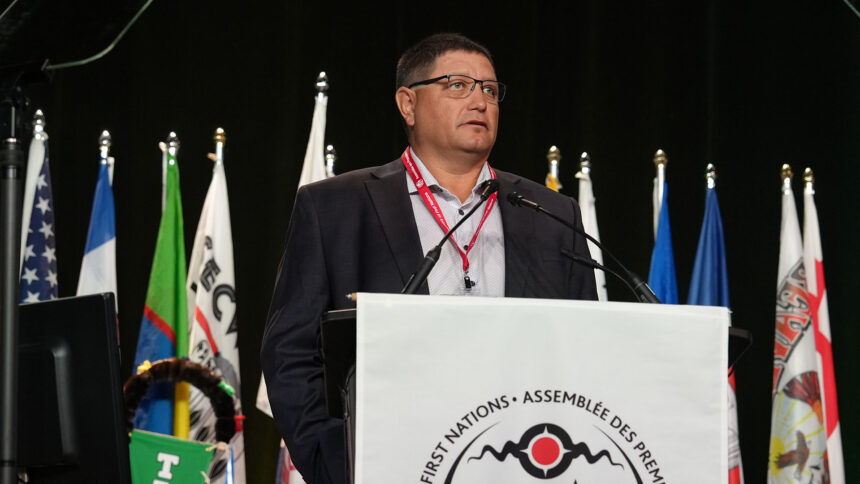
Leave a Comment



